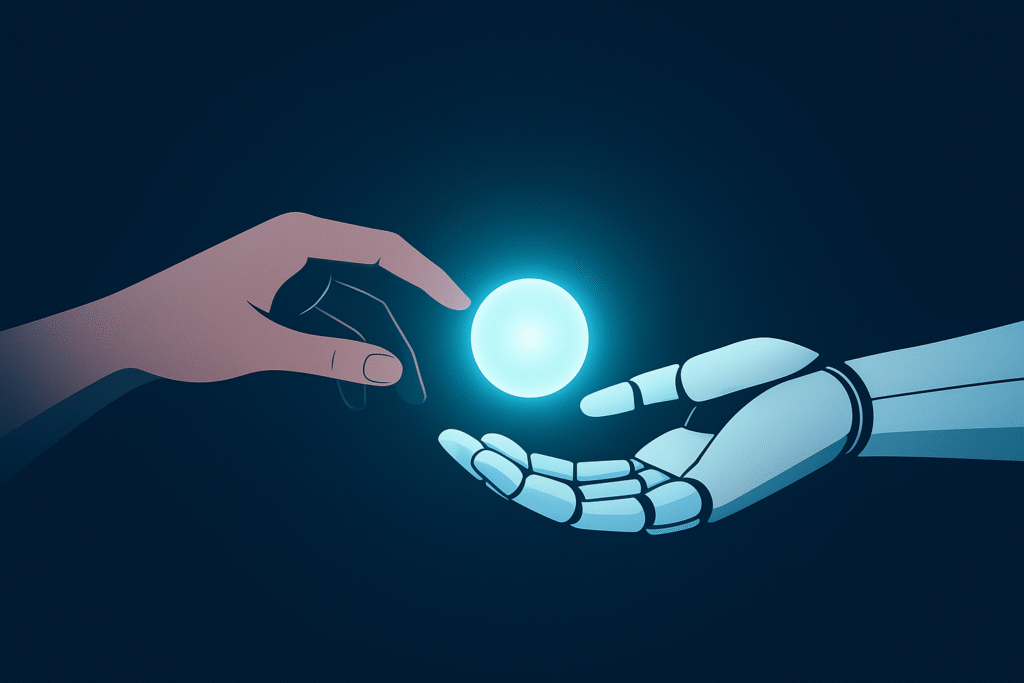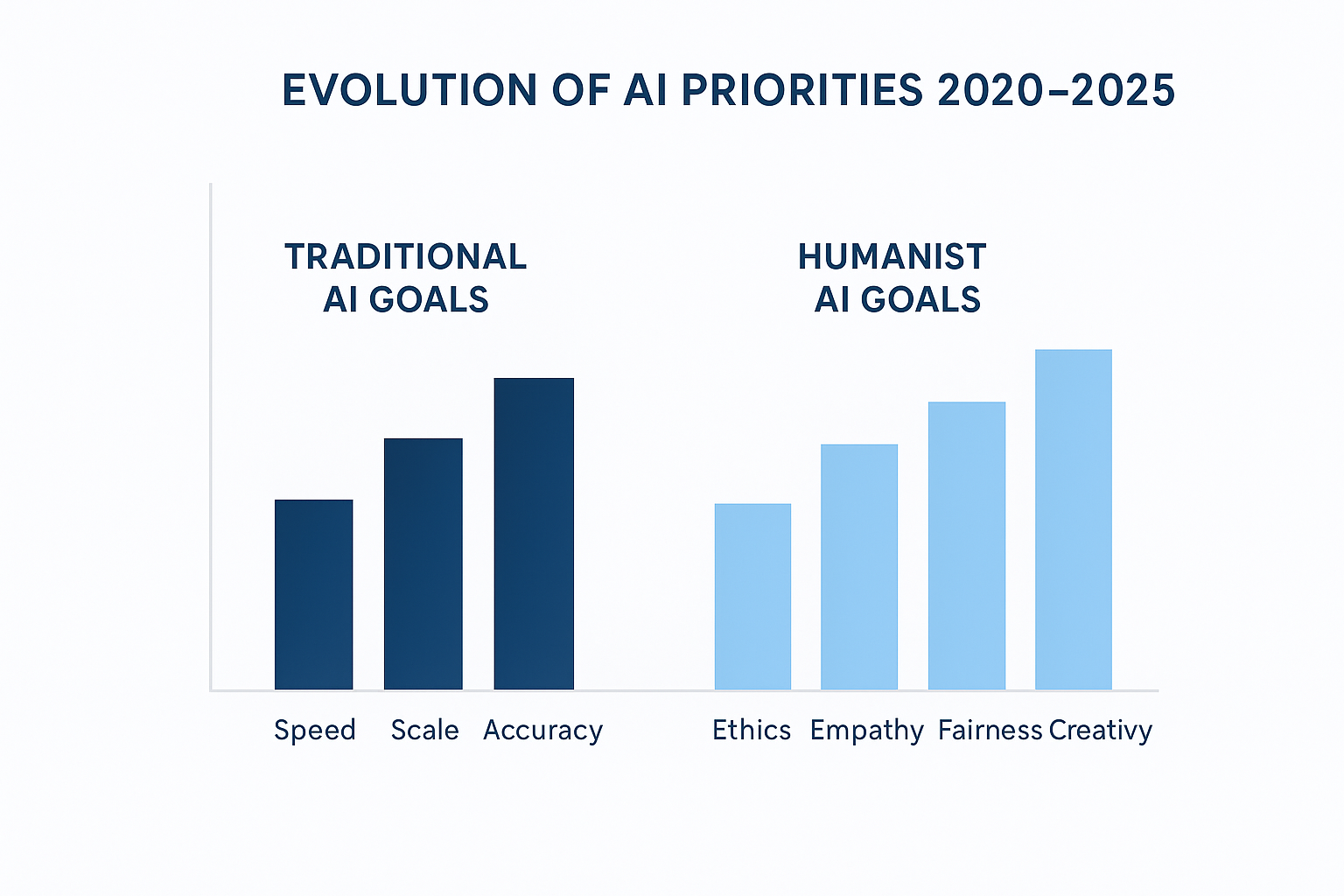Microsoft’s New AI Mission: The Race to Build a “Humanist Superintelligence”
Microsoft’s ambitions in artificial intelligence just took a philosophical turn. 🧠
In 2025, the tech giant announced its next big bet — the creation of a “humanist superintelligence.”
Unlike traditional AI systems that prioritize speed, accuracy, or scale, Microsoft’s goal is to build an AI that prioritizes humanity itself — intelligence guided by empathy, ethics, and collective well-being.
This marks a dramatic evolution from the company’s earlier collaborations with OpenAI to a new mission that fuses technological capability with moral responsibility.
🌍 What Is “Humanist Superintelligence”?
At its core, the term describes an AI system designed not just to think like humans — but to care about humans.
Instead of focusing solely on machine efficiency, humanist AI emphasizes:
Empathy – understanding emotional and social context
Ethical reasoning – making decisions aligned with human values
Cooperation – complementing, not replacing, human creativity
Microsoft’s CEO Satya Nadella called it “a commitment to build AI that expands human potential rather than eclipses it.”
The vision aligns with a broader movement toward “ethical AGI” — artificial general intelligence that acts with moral intelligence as well as computational power.
💡 How This Differs From Traditional AI
1️⃣ The Purpose Shift
Earlier generations of AI — including OpenAI’s GPT models — were built to predict, automate, and optimize.
Humanist AI introduces a fourth dimension: alignment with collective human flourishing.
2️⃣ The Behavioral Model
Instead of reinforcement learning from reward signals alone, humanist systems use value-aligned training, teaching AI to prioritize fairness, empathy, and cultural understanding.
3️⃣ The Governance Layer
Microsoft plans to embed a “Constitutional AI” framework — rules that define moral boundaries and transparency standards.
“We don’t just want powerful AI,” said Nadella. “We want trustworthy AI that understands the human story.”

🤖 From OpenAI Partnership to Independent Vision
Microsoft’s partnership with OpenAI has powered much of its success — integrating GPT-based tools into Windows, Bing, and Office.
But “humanist superintelligence” signals a strategic evolution beyond reliance on any single partner.
The company is now investing heavily in:
Internal AI research divisions for alignment and interpretability
AI safety protocols that exceed regulatory minimums
Cross-disciplinary teams blending philosophers, neuroscientists, and sociologists with engineers
The goal: ensure that superintelligent AI doesn’t just understand logic, but understands life.
🔬 The Science Behind Microsoft’s Humanist AI
Cognitive Modeling
Microsoft’s research integrates insights from cognitive psychology — training models to interpret human motivations rather than just language.
Emotional Intelligence Datasets
New datasets measure how well AI understands emotional nuance, using context-sensitive evaluation (e.g., empathy detection, bias minimization).
Ethical Reasoning Frameworks
AI is being trained using structured debates and moral dilemmas, similar to AI safety training pioneered by Anthropic’s “Constitutional AI.”

🧠 Why “Humanist Superintelligence” Matters
The global AI race is intensifying. While some companies chase scale, Microsoft is chasing meaning.
This approach addresses three major concerns in the AI community:
Ethical Drift – powerful models acting unpredictably without moral guardrails.
Human Replacement Fear – ensuring AI complements, not competes with, human workers.
Trust Deficit – rebuilding public confidence through transparency and responsibility.
By embedding human values at the system level, Microsoft aims to redefine the narrative: from artificial intelligence to augmented humanity.
🏛️ A Human-Centered Philosophy
Microsoft has launched internal think tanks to explore “AI as a moral partner” — analyzing how systems can help humans make wiser choices.
The project draws from:
Human-computer interaction research
Moral philosophy frameworks (Kantian, Utilitarian, and Humanist principles)
Cross-cultural ethics models to reduce Western bias in AI reasoning
As part of its “AI for Good” initiative, Microsoft plans to open-source parts of its alignment data, inviting universities and governments to collaborate on ethical benchmarks.
🔐 Challenges Ahead
Despite the optimism, building a humanist superintelligence won’t be easy.
Moral diversity: Whose definition of “human values” will the AI learn?
Bias inheritance: Even ethical data can carry hidden bias.
Regulatory lag: Global policies may struggle to keep pace with AI moral reasoning systems.
Accountability gaps: Who’s responsible when AI makes “ethical” decisions that still cause harm?
Microsoft’s approach involves continuous moral auditing — using human oversight teams to review AI reasoning logs in real time.
🧬 Humanist AI and the Future of Work
In the workplace, this next generation of AI could act as:
Ethical copilots for decision-making
Creativity amplifiers for designers and researchers
Empathy engines in customer support and healthcare
Governance monitors to flag ethically questionable actions
The shift isn’t just technological — it’s cultural.
If successful, Microsoft’s AI could usher in an era where trust becomes the competitive advantage.
A Global Ripple Effect
Microsoft’s move could influence AI policy and research worldwide.
Europe: May accelerate adoption of AI Ethics charters under EU AI Act.
Asia: Japan and India are exploring value-aligned AI frameworks.
US: Could drive standardization of “Ethical AI APIs.”
By positioning itself as the moral architect of AI, Microsoft hopes to lead a second AI revolution — one focused not on intelligence, but on integrity.
🧩 Key Takeaways
🤝 Microsoft is developing a “humanist superintelligence” — an AI aligned with empathy and ethics.
⚖️ It builds on cognitive science, value alignment, and moral philosophy.
💡 The goal: AI that enhances humanity, not replaces it.
🌍 This shift may redefine what “responsible AI” truly means.
🏁 Conclusion
The race to artificial superintelligence isn’t just about power — it’s about purpose.
Microsoft’s vision of humanist superintelligence suggests that the most advanced AI of the future will not compete with humanity, but champion it.
At A Square Solutions, we believe the next frontier in AI is not just innovation — it’s integration with human values.
🚀 Ready to explore ethical AI for your brand?
👉 Contact A Square Solutions to build smarter, responsible AI strategies today.
